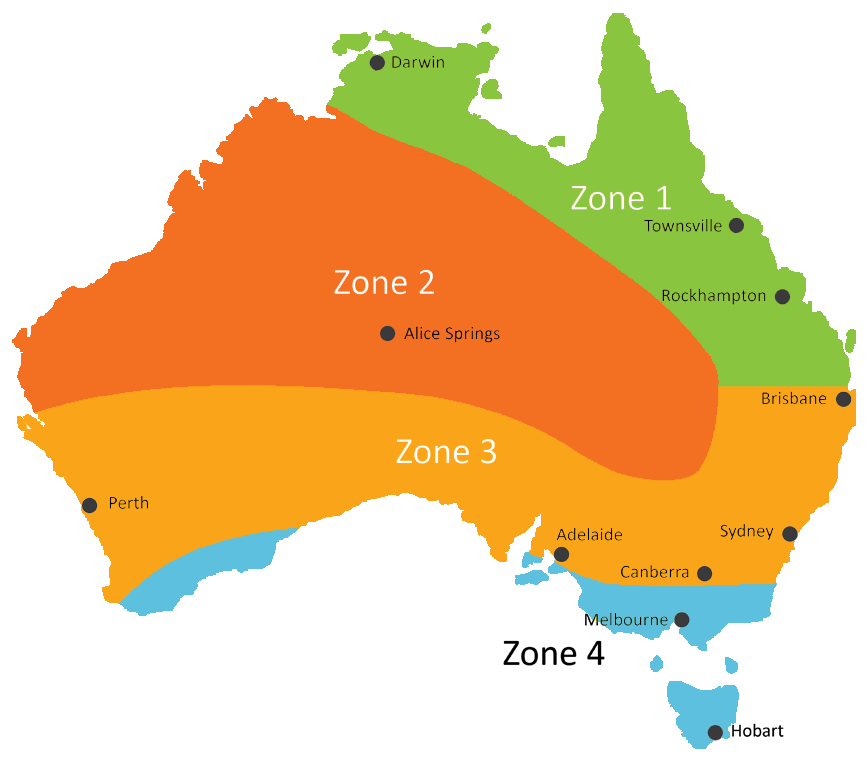Last update January 3rd, 2025 at 10:14 pm
Solar energy continues to be a popular and sustainable choice for Australian homeowners, and in 2025, it is no different. With solar power becoming more affordable, many Australians are considering making the switch. However, understanding the cost can be a bit tricky due to several factors that influence pricing. In this guide, we will break down the costs of installing solar in 2025, examine the factors that affect pricing, and give you an overview of what to expect.
The Average Cost of Solar in 2025
The cost of solar systems can vary significantly across Australia depending on where you live. On average, a 6.6kW solar system (which is the most popular size for residential homes) will cost between $4,000 and $8,000 in 2025. Here is a breakdown by states and territories:
- Northern Territory (NT): In the NT, a 6.6kW system typically costs around $5,500 to $7,500.
- New South Wales (NSW): In NSW, the average cost for a 6.6kW system is around $5,000 to $7,500. NSW benefits from strong sunlight and competitive installation prices.
- Victoria (VIC): The price for a 6.6kW solar system in VIC ranges from $4,500 to $7,000. This price is slightly lower due to government incentives.
- Queensland (QLD): Solar prices in Queensland are among the most competitive, with the cost of a 6.6kW system averaging between $4,200 and $7,000.
- South Australia (SA): In South Australia, the cost ranges from $5,000 to $7,800, with slightly higher prices in regional areas.
- Western Australia (WA): WA generally experiences higher prices due to transportation costs, with a 6.6kW system costing between $5,200 and $8,200.
- Tasmania (TAS): The cost of a 6.6kW system in Tasmania typically falls between $5,500 and $7,500.
- Australian Capital Territory (ACT): The ACT has similar prices to NSW, averaging between $5,200 and $7,500.

Factors That Will Affect Solar Costs in 2025?
There are a number of different factors that will affect your solar costs. We will now take a closer look at some of them.
1. The Solar Panel System Size
The size of your solar panel system will have the most significant impact on the overall cost. Larger systems, such as 10kW or 12kW systems, can cost between $8,000 and $15,000. A larger system provides more energy but requires more panels, which increases the cost. On the other hand, smaller systems (like 3kW) can cost between $3,000 and $5,000, but may not meet the energy needs of larger households.
2. System Type and Efficiency
The type and efficiency of the system will also influence the price. High-efficiency panels, such as monocrystalline panels, tend to cost more but provide better performance. They produce more energy per square meter and are generally more durable. Polycrystalline panels, while slightly cheaper, have lower efficiency and may require more space for the same output.
Inverters also vary in price, with string inverters being more affordable, while microinverters or power optimisers add to the system’s cost but offer greater flexibility and performance, especially in shaded areas.
3. The Government Rebate Will Affect Solar Costs in 2025
Government incentives, including the Small-scale Renewable Energy Scheme (SRES), can significantly reduce the upfront cost of solar systems. Under the scheme, eligible systems earn small-scale technology certificates (STCs), which offer a discount on the purchase price.
In 2025, rebates will remain available, but their value will decrease annually. This reduction is part of the government’s plan to phase out incentives as solar technology becomes more affordable.
Typically, rebates can lower solar installation costs by up to 30%, though the exact rebate depends on factors like system size and location. Additional state-based incentives may further reduce costs, particularly in Victoria and New South Wales.
The rebate amount also depends on your STC zone. Central and North West Australia fall under Zone 1, Darwin is in Zone 2, while Brisbane, Sydney, Adelaide, and Perth are in Zone 3. Melbourne and Tasmania are in Zone 4. The lower the zone number, the higher the rebate. We have developed an STC Calculator as a guide.

4. Solar Rebates
Rebates can significantly affect the upfront cost of your solar system. In 2025, several states will offer their own incentives in addition to the federal rebates. For instance, New South Wales provides battery incentives that can reduce costs for homeowners who opt for both solar panels and a home battery system. Victoria also continues to offer interest-free loans for solar battery systems, which can reduce the overall cost of both installation and battery storage.
It’s essential to stay updated on available rebates, as they change frequently and could offer significant savings if you act quickly.
5. Why Can Solar Pricing Differ Between Installers?
The pricing of solar installations varies between installers due to several factors:
- Reputation and Experience: Established companies with a strong track record may charge higher prices because of their expertise, reliability, and customer support.
- Quality of Materials: Some installers offer premium components like high-efficiency panels and advanced inverters, which can raise costs compared to those using standard options.
- Service Offerings: Installers that include extras like extended warranties, post-installation monitoring, or maintenance plans may charge more.
- Operational Costs: Regional labour rates, overhead expenses, and company size can influence pricing.
- Custom Designs: Installers may adjust prices based on the complexity of your system’s design, roof type, or unique requirements.
- Bulk Purchasing: Larger companies often secure bulk discounts on equipment, which can lead to competitive pricing.
- Local Competition: Areas with more installers may have lower prices due to competition, while remote regions might see higher costs.
Comparing quotes helps identify the best balance between price and quality. Remember that while opting for the cheapest installer might seem appealing, it’s crucial to consider factors like reliability and customer reviews. An experienced installer often provides better service and long-term system performance.
6. Market Forces and the Australian Dollar
Market forces, including the price of raw materials, labour availability, and the Australian dollar’s strength, play a role in determining solar prices. As the global demand for solar panels rises, prices can fluctuate. The Australian dollar’s value against the US dollar, in particular, affects the cost of solar imports, as most solar panels are manufactured overseas.
If the Australian dollar weakens, solar panel prices could rise, increasing the overall cost of solar systems. Similarly, global supply chain issues or trade tariffs could cause prices to spike temporarily.

Conclusion
The cost of installing solar in 2025 depends on several factors, including system size, type, location, and available rebates. On average, a 6.6kW solar system costs between $4,000 and $8,000, with variations across Australia’s states and territories. Government incentives, installer pricing, and market dynamics also play significant roles in determining costs. By understanding these factors and taking advantage of available rebates, you can make an informed decision and enjoy the long-term benefits of solar energy. Investing in solar remains a smart choice for reducing energy bills and contributing to a sustainable future.